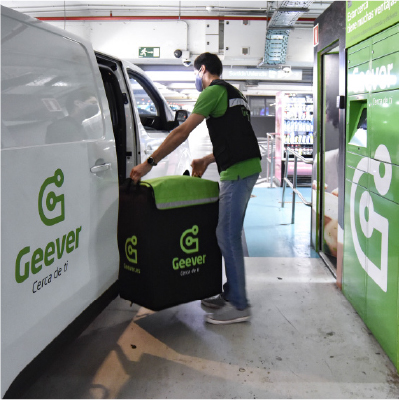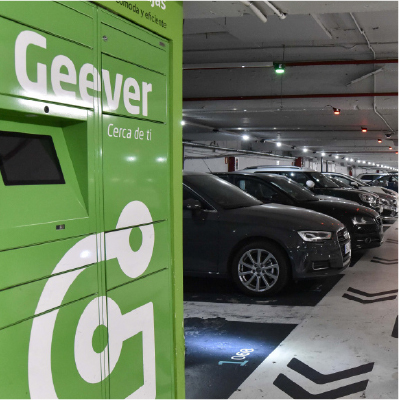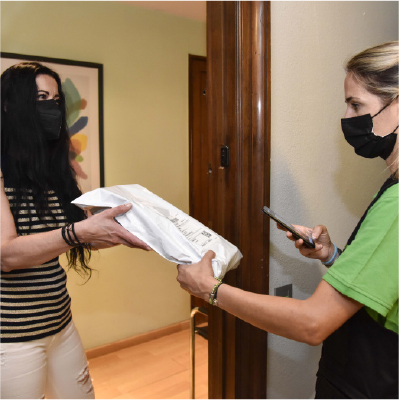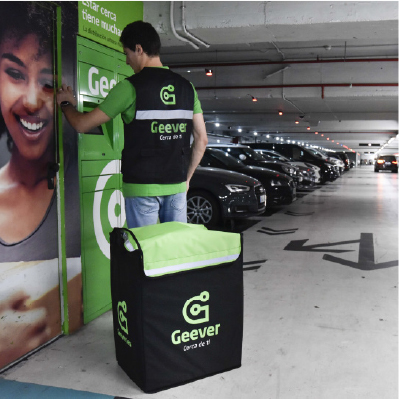Since 2018, Saba and Geever have worked together in Barcelona in the development of a sustainable last mile logistics model (LML), based on sustainable efficient home proximity distribution (last mile) and a network of car parks that work as distribution microhubs that cover nearby areas that permit short routes and integration with the neighbourhood and its citizens. This experience succeeded in reducing failed deliveries to below 10%.
Geever currently operates in Barcelona through 40 points, of which 18 are public car parks (Saba, Bamsa and BSM) and 22 are box rooms with a forecast in the future to consolidate a network based exclusively on car parks or distribution microhubs.
Proximity distribution avoids stoppages of motor vehicles on public roads (49% of hauliers double park), and it succeeds in reducing 75% of emissions in urban surroundings, allowing the inclusion of locker collection, without these representing an additional stop. This network of microhubs can also provide a service to traditional business, being a potential element for its efficient reactivation.
Geever operates in Barcelona through 40 points, of which 18 are public car parks



























